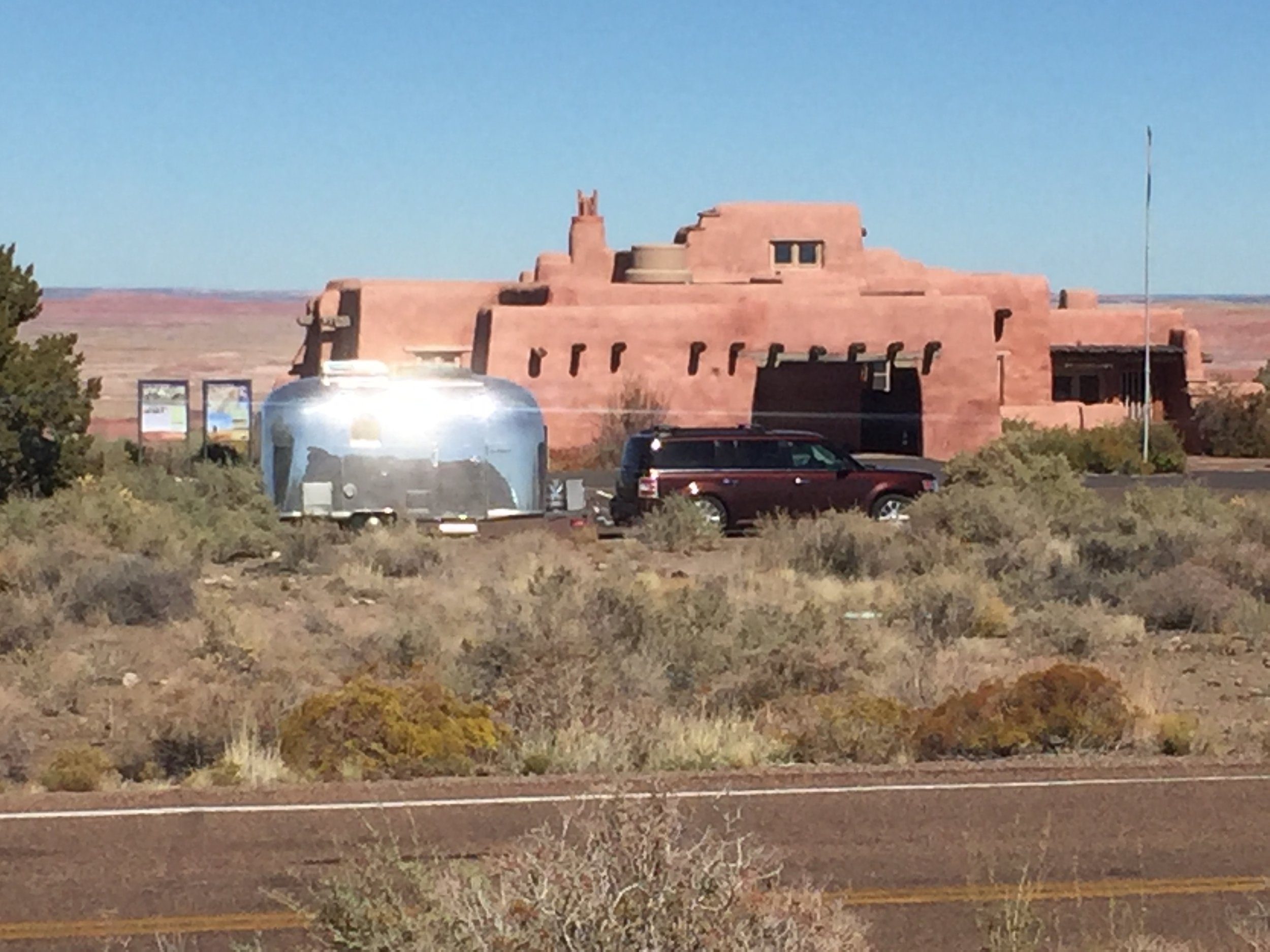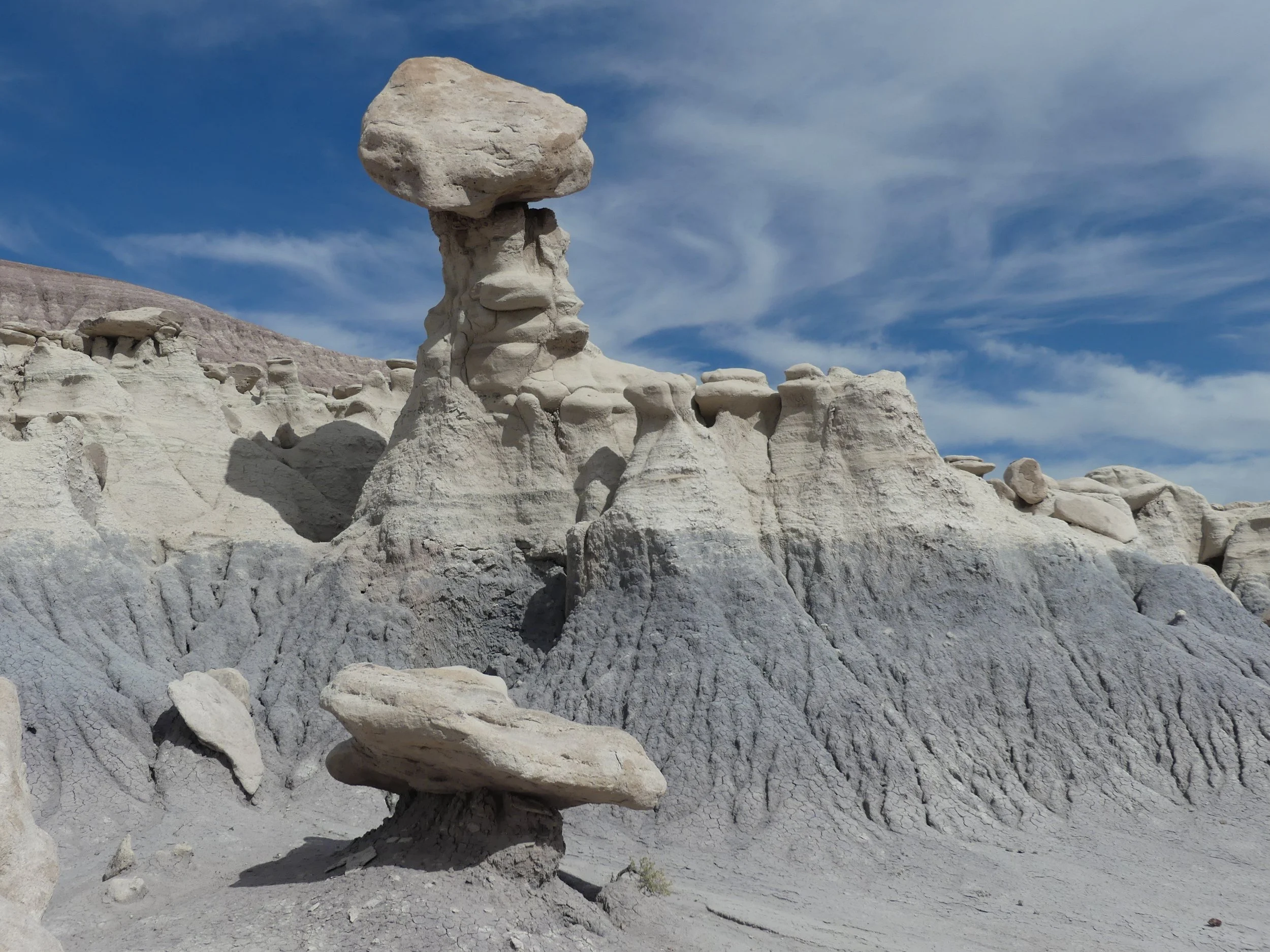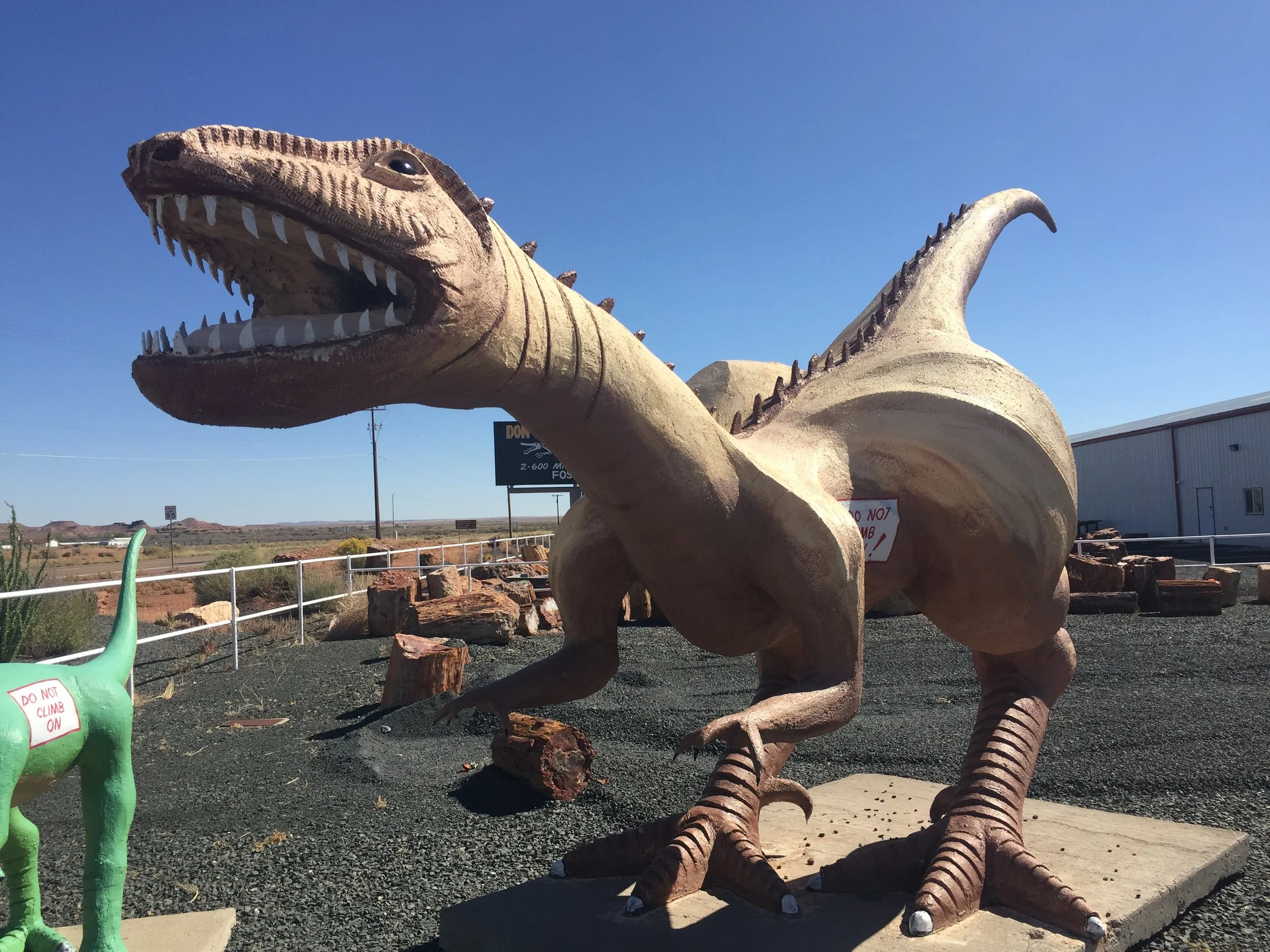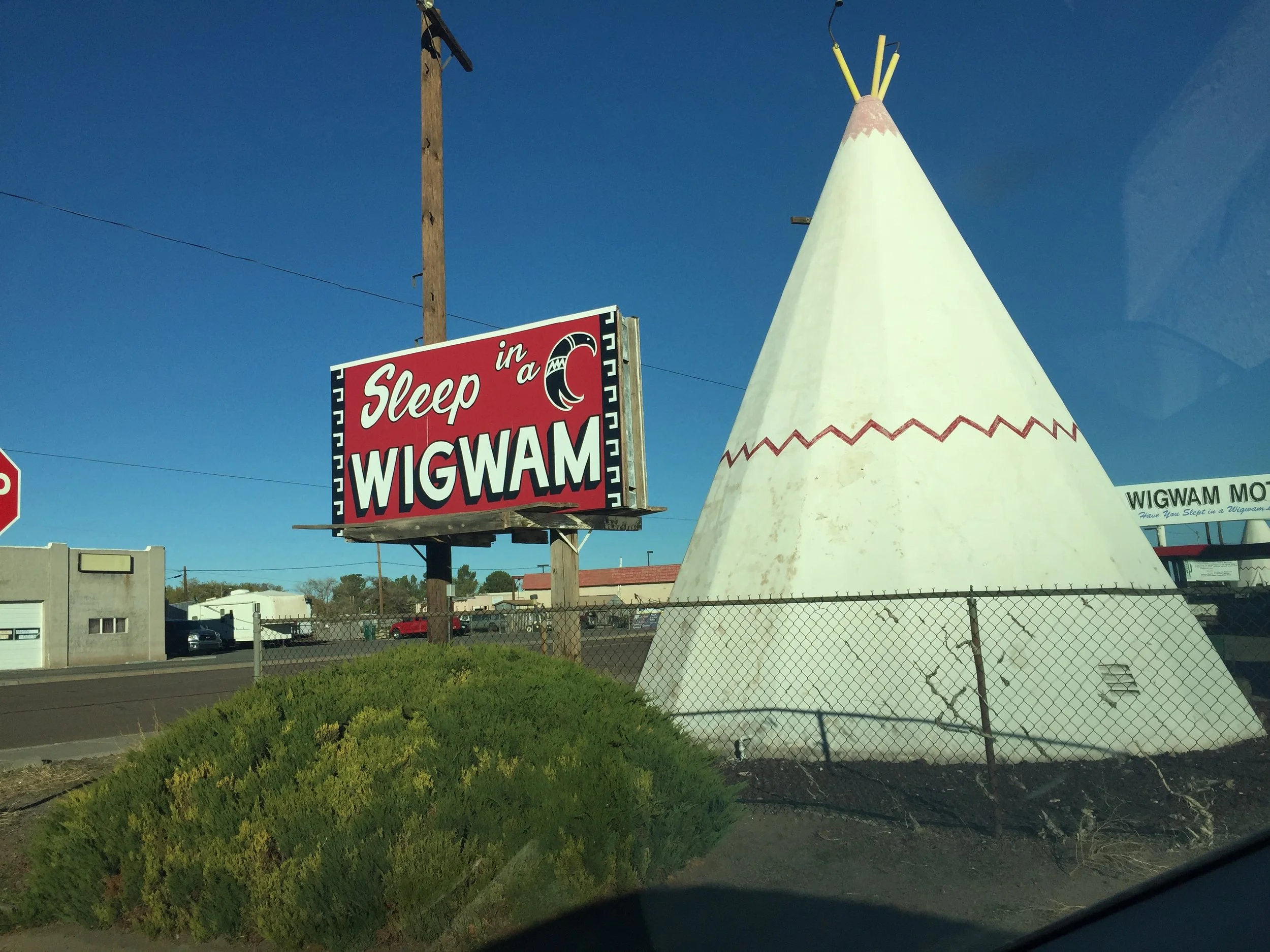Petrified Forest National Park
“An Ecosystem in the Desert” is what I named my Petrified Forest Artist-in-Residence project. Of course there are the fossil trees, and the lesser-known Triassic animals. But in a broad sense, the ecosystem extends beyond the well-traveled park to the wilderness, the surroundings, the nearby towns, and the history of both millions of years ago and today.
Dinosaur Apotheosis
(Day Sky and Night Sky Versions)
The astrogalus (ankle), fibia, and tibia of the Chindesaurus, a dinosaur discovered in the painted desert in 1965. The bones turn a purple color when exposed to oxygen and are floating here with a cowboy rose. Georgia O’Keeffe painted floating bones she found in New Mexico. Ironically a similar species of dinosaur (Ceolophysis) was found at the Ghost Ranch nearby her house. She would go out and watch the paleontologists at work. When first excavated, however, the bones are often compacted and crushed and much work is required to separate them from their rock matrix and stabilize them. In contrast, drought in the 1930s killed many horses and cattle and the bones lay about the Ghost Ranch.
Evaporation Ponds
Seen from the air a set of evaporation ponds sits very close to the park boundary near the railroad tracks along Adamana Road. The colors remind of turquoise and clouds. Evidently the ponds are used by the underground natural gas facility that sits along the tracks. At first, though, I thought they might be used in potash mining, which enjoyed a short-lived boom. Potash underling the park, could present a future problem.
Rounding the Corner
Driving from South to North the discovery place of Chindesaurus is passed and the Painted Desert and its Inn come into view. This was a quick demo piece for my third public program. I recall the visitors liking it more than I did.
Pilot Point at Sunset
Pilot Point was a constant companion on the horizon. Sunset inspired an experiment: lay down in view of horizon as the sun sets, as soon as the sun totally disappears jump up, look at the horizon. This shows the effect of the curvature of the Earth, as the sun partially reappears and you see further across the horizon.
Night in the Painted Desert
The Painted Desert runs for miles through Northeastern Arizona and the Navajo Nation. The colorful formations are the result of years and years of erosion: there is enough rainfall to erode the surface, but not enough for vegetation to form a protective covering. Hence some of the most spectacular landscapes.
The Battleship
An eroding remnant of the rocks that once covered the area. Petrified logs once poked out of the sides, inspiring the name. Funny how in someone’s living or written memory that most that were there have now slid down the sides. A single raven watched.
In the Spirit World
On a backcountry hike our guide, Christa Saddler, found a pottery shard. In addition to all the other reasons it should be left where it was found, she related that a Hope elder once told her that these still have use in the spirit world, likewise, what we call ruins are still in use as apartments in the spirit world. The pottery is one I made a few years ago in a Caddo pottery class, and the apartment is Wukoki at Wupatki National Monument.
Beginnings and Endings
The scientific consensus is settling on the idea that extreme vulcanism caused the extinction at the end of the Permian leading to the beginning of the Triassic. The Triassic being the main period seen at the Petrified Forest. Asteroids have also been contemplated. Today climate change due to burning fossil fuels is causing change that could be as severe.
Out of Time
Because of the name, it’s hard not to think of the Petrified Forest being like a forest that we not. Likewise it might be hard to realize that the ancient animals would not be home in the desert that exists today. Here our hero is roaming a painted desert that would decidedly not be a welcoming environment.
The Very Old School Vacation
Many of my experiences in the park and surrounding areas are referenced in “Very Old School Vacation.” The Chindesaurus has been caught stacking stones and is “wanted” in several ways. The oil school vacationers are taking petrified wood and a revultosaurus skull with them, but they’ve been tripped up by Chinde’s stacked stones. At the center is the Wigwam Motel in Holbrook, Arizona. To their right is the Tepee Formation in the park. Standing among the wigwams is one of my favorite tourist dinosaur. At left is the power plant west of Holbrook and its smoke plumes.
Cyanotypes and a Block Print
He’s All Hat and No Cattle (Because He Ate Them)
Relief print from tooled leather
This dino stands at the site of Holbrook’s dog park irritating the park palentologists; he and the other dinosaurs are mostly not of the Park’s Triassic time period!




















